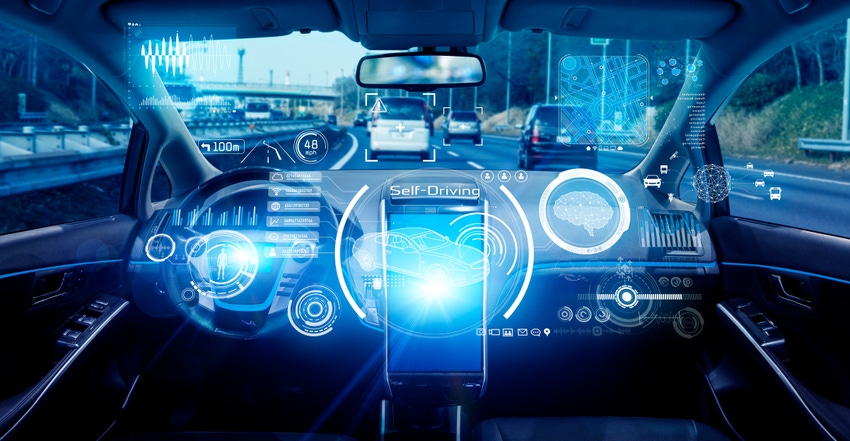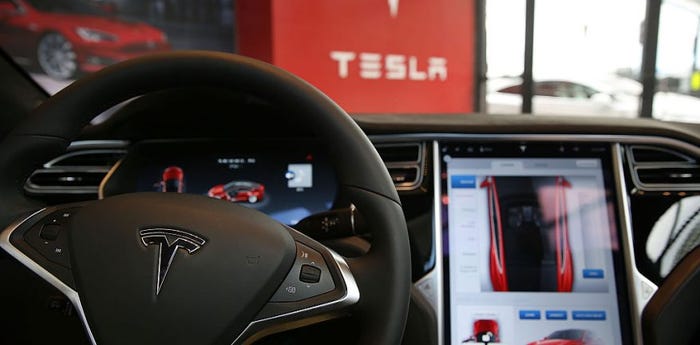Technology Is Ready for UK Road Users to Embrace More Autonomy
Despite legal, infrastructural and cultural barriers, the tech itself is more than capable of safely supporting more autonomy than currently available

The idea of a self-driving car has been around for decades, but in the last year or two, it has gone from sci-fi to a regular fixture in the news cycle. GM’s SuperCruise (hands-free) driving has now traveled more than 77 million miles and the U.K. government has stated they aim for more self-driving on U.K. motorways by 2026.
After all, there are many potential benefits - particularly when it comes to road safety, as human error causes the majority of road accidents. This doesn’t mean some cars or roads aren’t safer than others, but it does mean that an effective level of autonomous driving can help provide another pair of eyes on the road, foot on the brake, or hand on the wheel. After all, five people die every day in road accidents on average in the U.K. alone, so any further safety assistance can only be a good thing.
Self-driving vehicles may seem like “tech bro” optimism, but some autonomy on U.K. motorways is already a reality. We have the potential to increase this level of autonomy if we keep two factors in mind; that autonomy is a scale, and that the technology itself, today, is capable.
Level one autonomy is some driver assistance, such as cruise control, and level two has other elements automated, including hands free driving. These two levels require the driver to monitor the environment at all times. In levels three and above, the machine becomes more capable of environmental detection; this is where true automation begins. Experts generally agree that the industry is currently between level two and level three.
What is required to see extensive level 3+ autonomy is also often already available or in use. Firstly, and most importantly as safety is the number one priority, cars need highly accurate absolute positioning via augmented Global Navigation Satellite Systems (GNSS) as part of their Advanced Driver Assistance Systems (ADAS). Automotive-industry standard satellite systems can provide real-time route corrections and positioning with an accuracy of up to 3.9 inches.
Satellite data needs to be checked against industry-grade mapping data and relative positioning from inertial motion sensors, proximity sensors, cameras and a wide range of other on-vehicle sensors to ensure positioning is dynamic, precise and always with a fail-safe backup in case one solution – for example, connectivity drops.
Like with all artificial intelligence, autonomous technology profits from more technology, sensors, data and redundancy. It is also vital that the complete stack of technological solutions is agnostic. This means any car manufacturer can use the safest sensor or software to maximize safety, efficiency and time-to-market.
There is, however, a huge distance from levels three to four – "high levels of automation in many contexts.” Even here, much of the technology is available, but every car and much of the infrastructure may have to adopt it – with infrastructure, urban design and other road users required to evolve.
Cities and roads will need to be smarter, some infrastructure re-designed, legal responsibilities revamped, communication made constant between cars (and between cars and potential obstructions) and their surroundings, and 5G+ rolled out extensively. This would all require extensive cooperation and collaboration between all levels of public authorities, car manufacturers, software vendors, and road users; in other words, no small feat.
Aside from the technology and infrastructure, legal reform is also needed to correctly assign responsibility away from the driver and toward the vehicle manufacturer. The U.K. government has signaled its will to make these changes in November 2023’s King’s Speech. However, it is up for debate whether car manufacturers will so willingly want to accept so much liability. Reaching level 3 safely and extensively, therefore, is now the work of lawyers and politicians, rather than inventors, scientists or technology vendors.
About the Author(s)
You May Also Like



.png?width=700&auto=webp&quality=80&disable=upscale)
.png?width=700&auto=webp&quality=80&disable=upscale)
.png?width=300&auto=webp&quality=80&disable=upscale)
.png?width=300&auto=webp&quality=80&disable=upscale)
.png?width=300&auto=webp&quality=80&disable=upscale)
